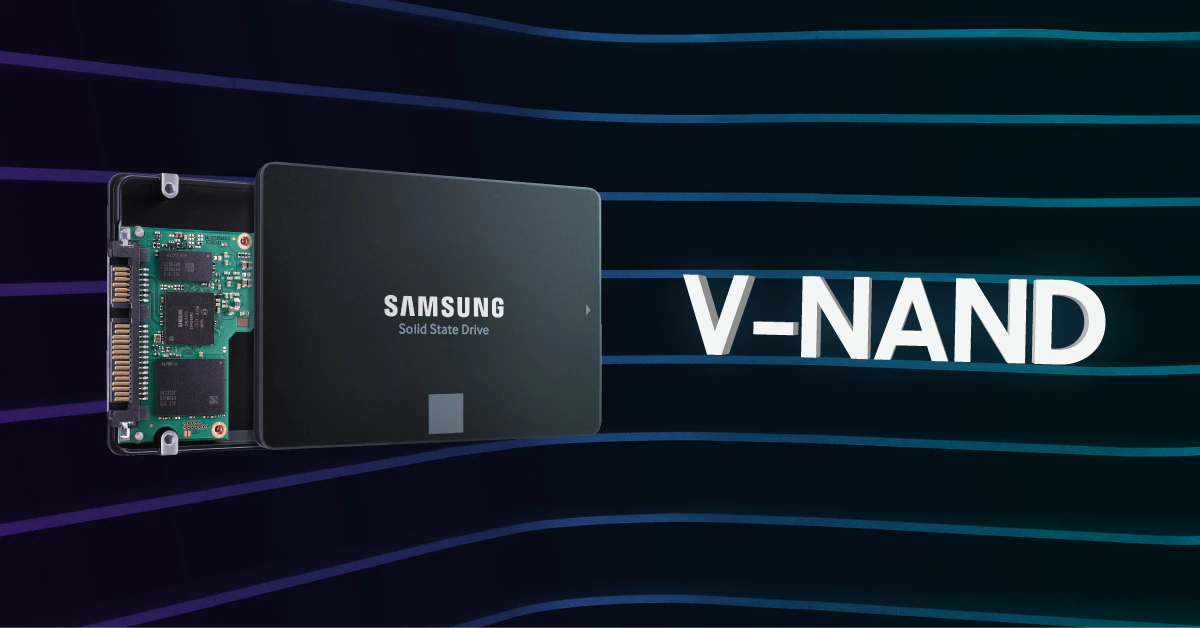Samsung has just showcased its products for the future including GDDR7 memory, 32GB of DDR5 Memory and LPDDR5X DRAM. These innovations play a key role in highlighting Samsung’s position in the semiconductor and memory industry.
GDDR7 Memory
For next-gen, GDDR7 will be a vital element due to the increased data rate requirements. Samsung’s GDDR7 modules run at 36Gbps which over a 384-bit bus rate amounts up to a massive 1.728TB/s of effective bandwidth. This is ~70% more than the RTX 4090, which is yet to retail. This new GDDR7 memory is aimed at the data center, HPC, mobile, gaming and the automotive market segments.
1000+ V-NAND Layers
Samsung’s V-NAND technology has seen over 8 generations, with the layer count increasing by 10x. Their latest 512Gb eighth-generation V-NAND promises a density improvement of 42%. The 9th generation V-NAND is currently in development planned for 2024. By 2030, we are expected to see Samsung’s 1000 layer V-NAND technology hit the market.
As AI and big data applications drive the need for faster and higher-capacity memory, Samsung will continue to leapfrog bit density by accelerating the transition to quad-level cell (QLC), while further enhancing power efficiency in support of more sustainable customer operations worldwide.
~Samsung

DRAM Innovation
Samsung’s 1b DRAM is going through development stages and is planned for mass production by 2023. Scaling beyond 10nm came with its own set of issues. To overcome these problems, the company has developed solutions in patterning, materials and architecture. This is shown by technology such as High-K materials.
Expanding beyond conventional DRAM, Samsung also underscored the importance of tailored DRAM solutions such as HBM-PIM, AXDIMM and CXL that can fuel system-level innovation in better handling the explosive growth of data worldwide.
~Samsung
Conclusion
This year marks the 30th and 20th year respectively for Samsung’s leadership in DRAM & NAND flash memories. Samsung has unveiled its fifth-generation 10nm-class (1b) DRAM as well as eighth- and ninth-generation V-NAND affirming the company’s dedication to this market segment.
“One trillion gigabytes is the total amount of memory Samsung has made since its beginning over 40 years ago. About half of that trillion was produced in the last three years alone, indicating just how fast digital transformation is progressing. As advances in memory bandwidth, capacity and power efficiency enable new platforms and these, in turn, stimulate more semiconductor innovations, we will increasingly push for a higher level of integration on the journey toward digital coevolution.”
— said Jung-bae Lee, President and Head of Memory Business at Samsung Electronics.
Samsung will undoubtedly be a key player in the years to come. Memory is a vital component used in every segment of the semiconductor industry. Storage is what makes a computer, a computer. GDDR7 will not arrive with AMD’s RDNA3. However, we expect this cutting-edge technology to ship with NVIDIA’s RTX 5000 & AMD’s RDNA4.
The post Samsung’s GDDR7 36Gbps Memory In Production, Highlights Future Roadmap appeared first on Appuals.com.

0 Commentaires